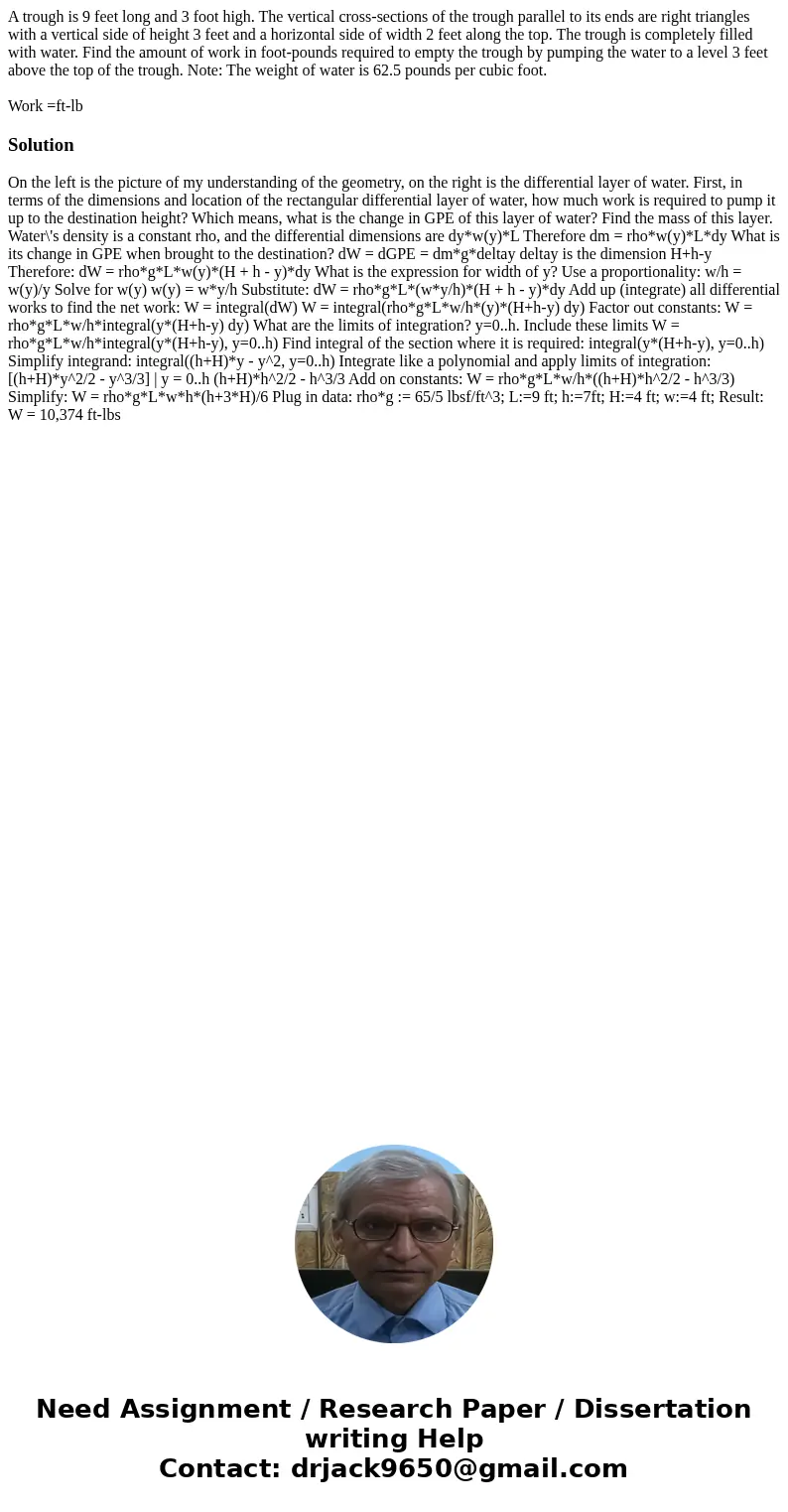A trough is 9 feet long and 3 foot high The vertical crossse
A trough is 9 feet long and 3 foot high. The vertical cross-sections of the trough parallel to its ends are right triangles with a vertical side of height 3 feet and a horizontal side of width 2 feet along the top. The trough is completely filled with water. Find the amount of work in foot-pounds required to empty the trough by pumping the water to a level 3 feet above the top of the trough. Note: The weight of water is 62.5 pounds per cubic foot.
Work =ft-lb
Solution
On the left is the picture of my understanding of the geometry, on the right is the differential layer of water. First, in terms of the dimensions and location of the rectangular differential layer of water, how much work is required to pump it up to the destination height? Which means, what is the change in GPE of this layer of water? Find the mass of this layer. Water\'s density is a constant rho, and the differential dimensions are dy*w(y)*L Therefore dm = rho*w(y)*L*dy What is its change in GPE when brought to the destination? dW = dGPE = dm*g*deltay deltay is the dimension H+h-y Therefore: dW = rho*g*L*w(y)*(H + h - y)*dy What is the expression for width of y? Use a proportionality: w/h = w(y)/y Solve for w(y) w(y) = w*y/h Substitute: dW = rho*g*L*(w*y/h)*(H + h - y)*dy Add up (integrate) all differential works to find the net work: W = integral(dW) W = integral(rho*g*L*w/h*(y)*(H+h-y) dy) Factor out constants: W = rho*g*L*w/h*integral(y*(H+h-y) dy) What are the limits of integration? y=0..h. Include these limits W = rho*g*L*w/h*integral(y*(H+h-y), y=0..h) Find integral of the section where it is required: integral(y*(H+h-y), y=0..h) Simplify integrand: integral((h+H)*y - y^2, y=0..h) Integrate like a polynomial and apply limits of integration: [(h+H)*y^2/2 - y^3/3] | y = 0..h (h+H)*h^2/2 - h^3/3 Add on constants: W = rho*g*L*w/h*((h+H)*h^2/2 - h^3/3) Simplify: W = rho*g*L*w*h*(h+3*H)/6 Plug in data: rho*g := 65/5 lbsf/ft^3; L:=9 ft; h:=7ft; H:=4 ft; w:=4 ft; Result: W = 10,374 ft-lbs
 Homework Sourse
Homework Sourse